Hello Hello Hivians.
Let's go for a wee daunder! Join me as I share some of the historic sights of Inverkeithing, a town with a story to tell, for example why do locals call it the "**Divit**".
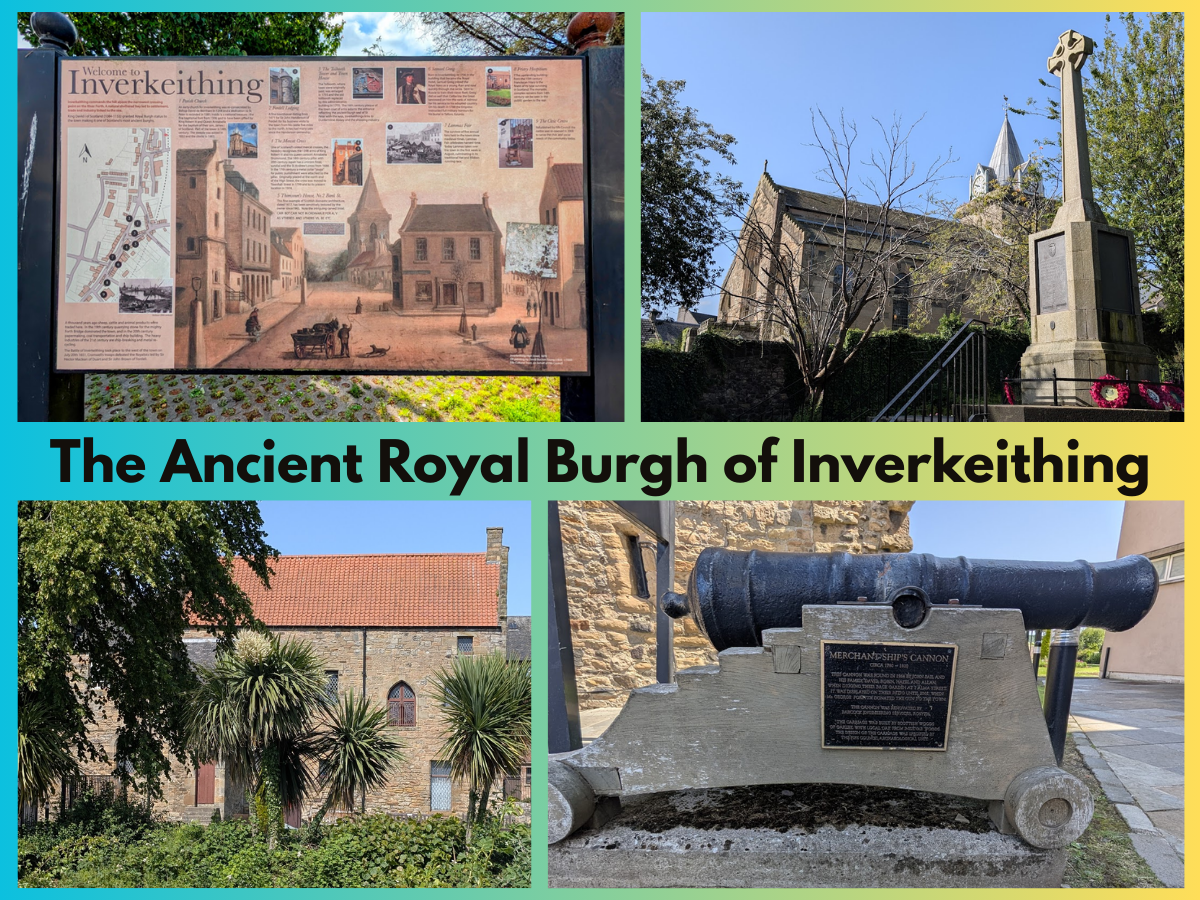

### Welcome to Inverkeithing
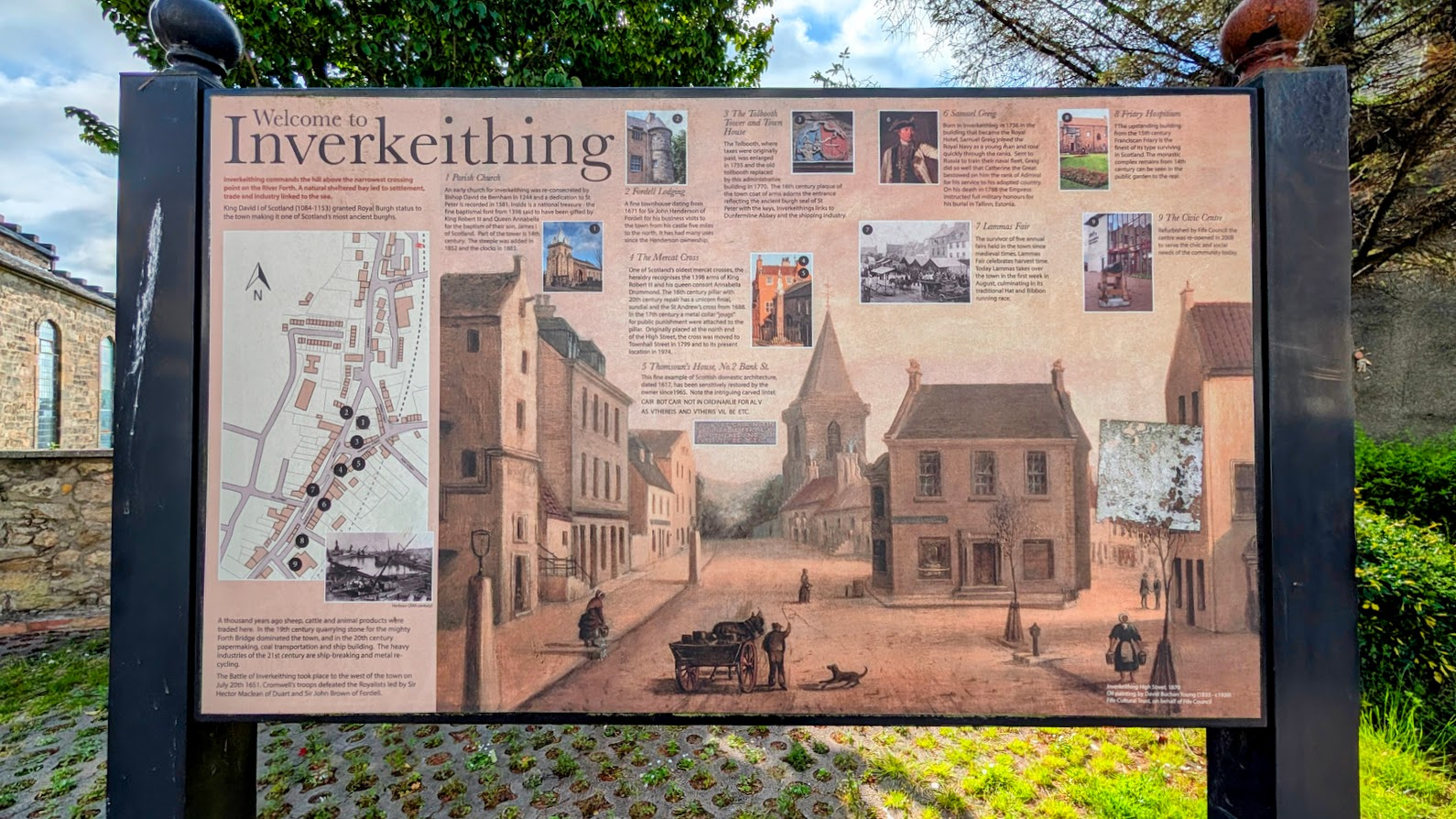
**Inverkeithing is a historic Royal burgh in Fife**, Scotland and is situated on the Firth of Forth as we can see on our WorldMapPin screenshot.
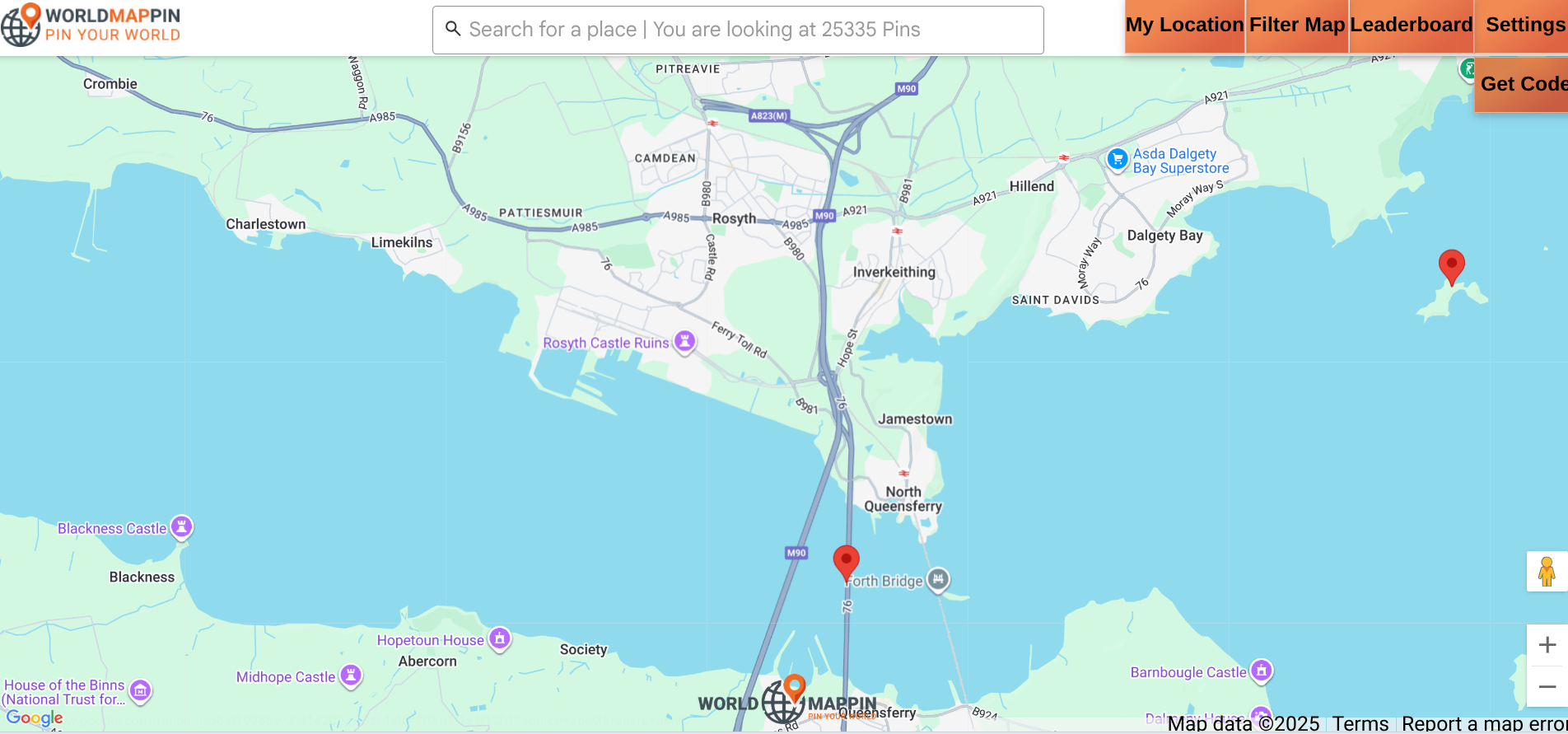
During the reign of King Malcolm IV between 1153 and 1162, Inverkeithing was granted the status of Royal Burgh, making it one of the first royal burghs in the area of Fife.
This royal burgh status was granted due to its strategic location as a key crossing point of the Firth of Forth with a sheltered bay making it ideal for trade.
It has a history of trade and shipbreaking.
### Getting there
Everywhere you look you can see the crossings to Edinburgh. The iconic bridge you see is the Forth Bridge, that is used by trains.
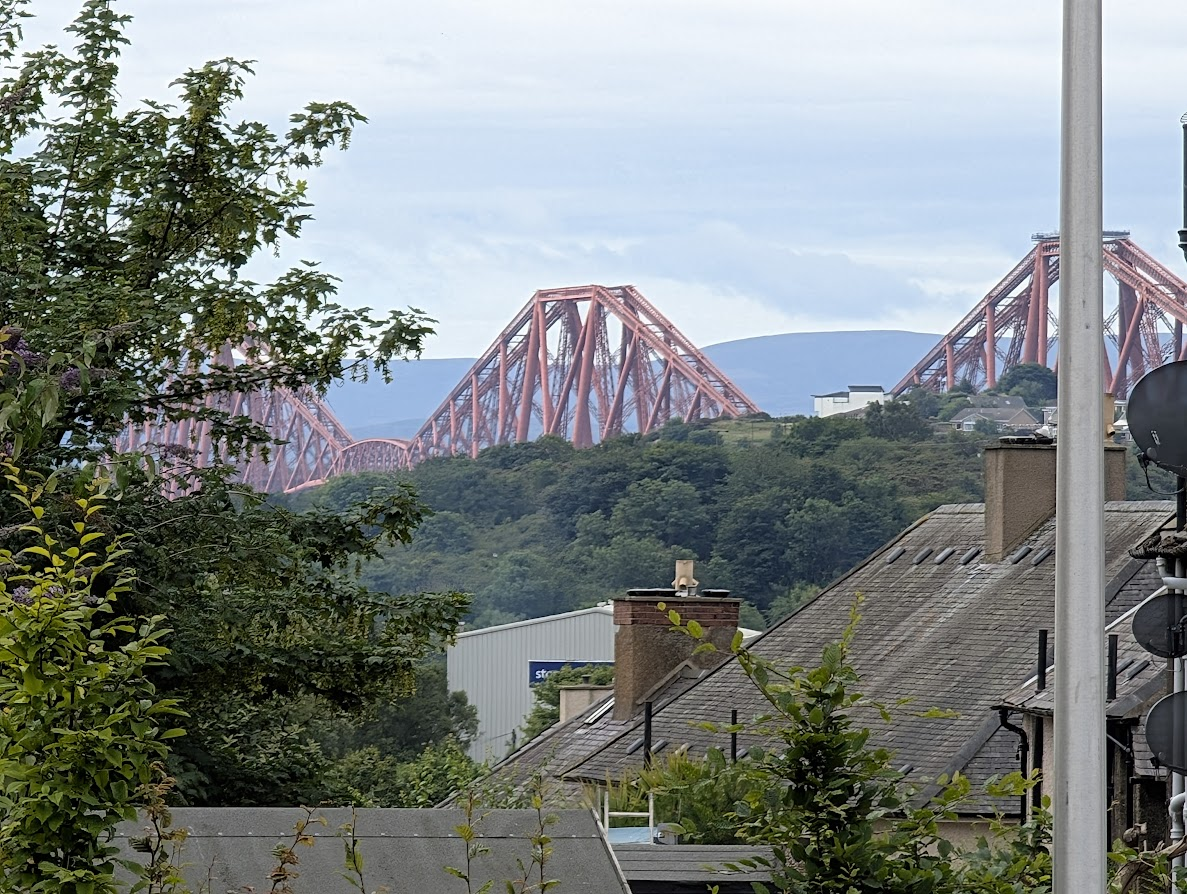
Inverkeithing is a hub for rail, as trains going inland as well as trains going along the coast meet at Inverkeithing, so it is often a jump on and off spot!
### The Edinburgh train!

Pretty much anywhere you stand in Inverkeithing you can see one of the three bridges that cross the Firth of Forth
### The 3 sails of the Queensferry Crossing
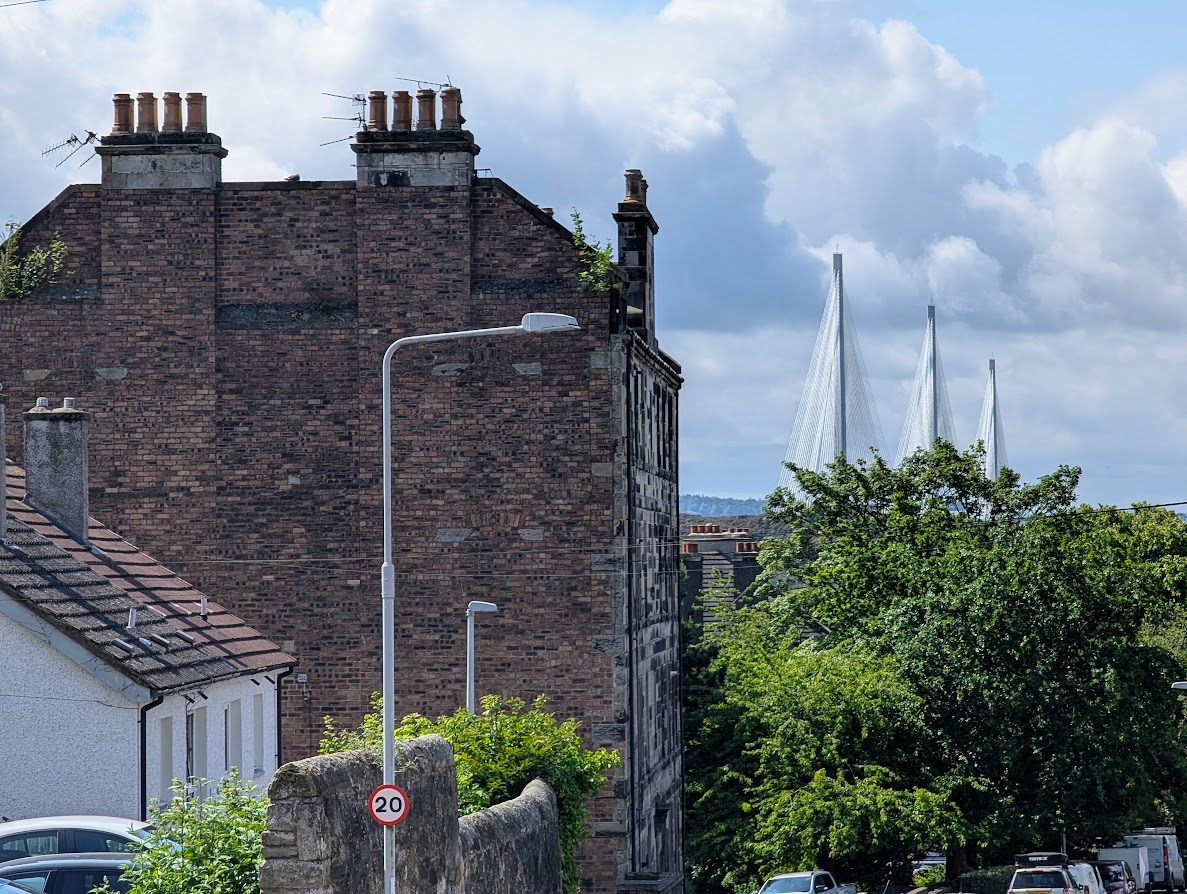
Everything leads into the main square, which has been dug up and getting reworked and has been having utter chaos these last few months, as just like the rail, the road networks going along the coast and inland meet here too!
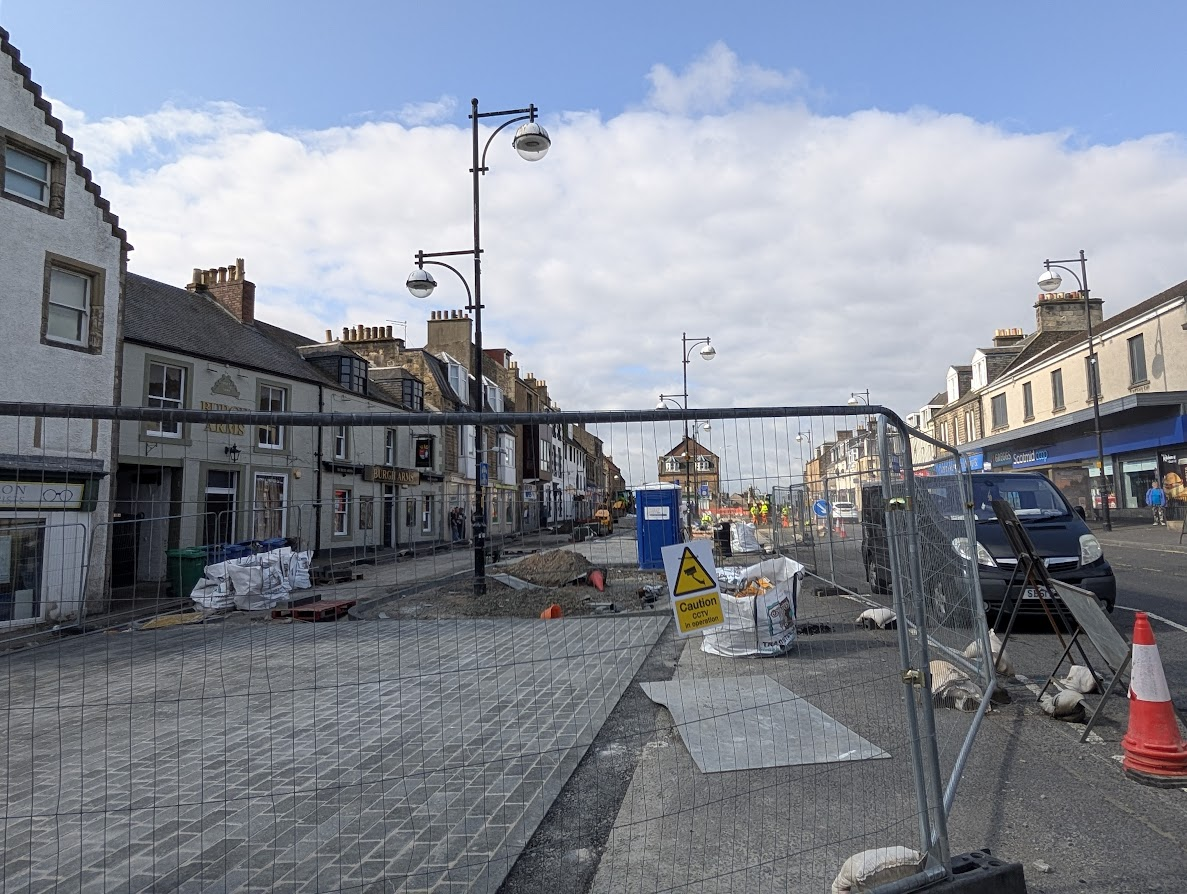

### St. Peter's Church
A church has stood on this site since as early as the 5th century although the current building has been rebuilt over time.
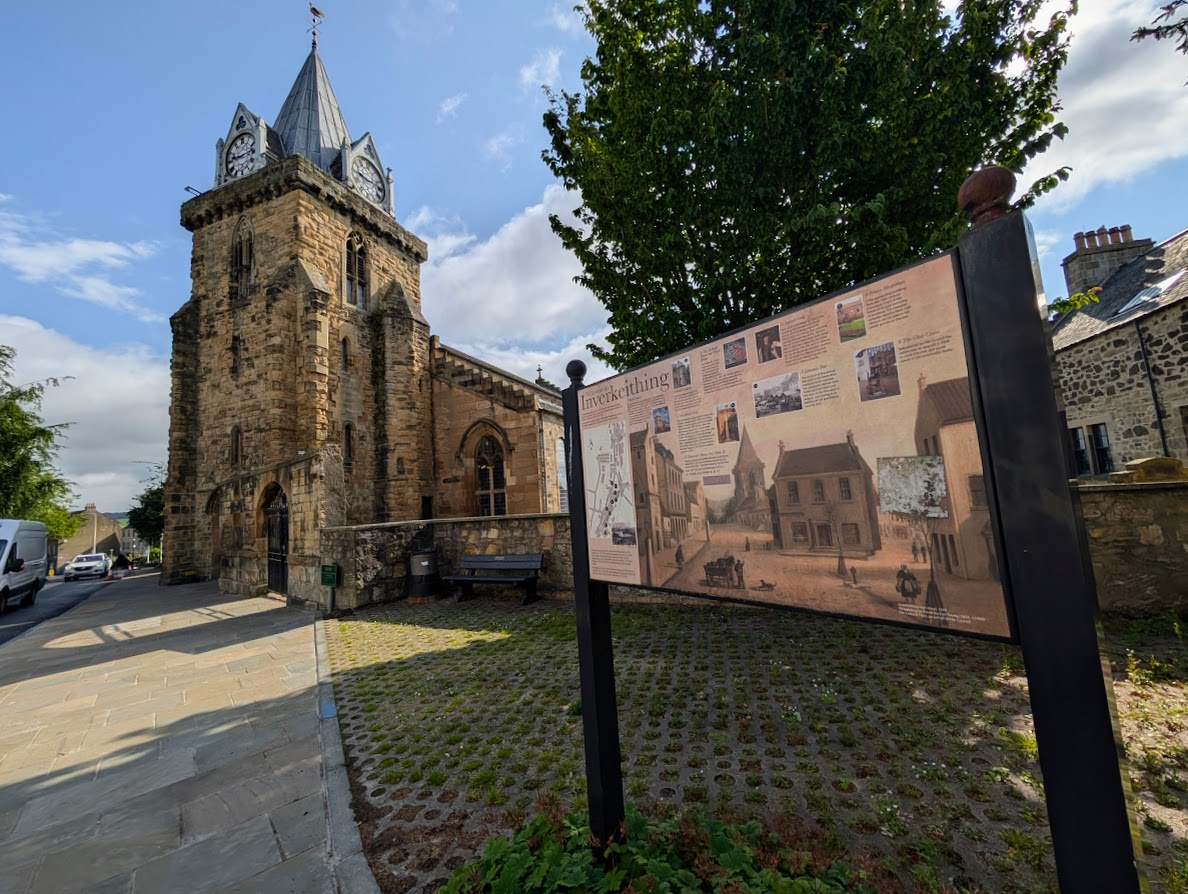
The church tower however, is much more ancient and dates back to the 1300s. It stands as a testament to Inverkeithing's long-standing religious history.
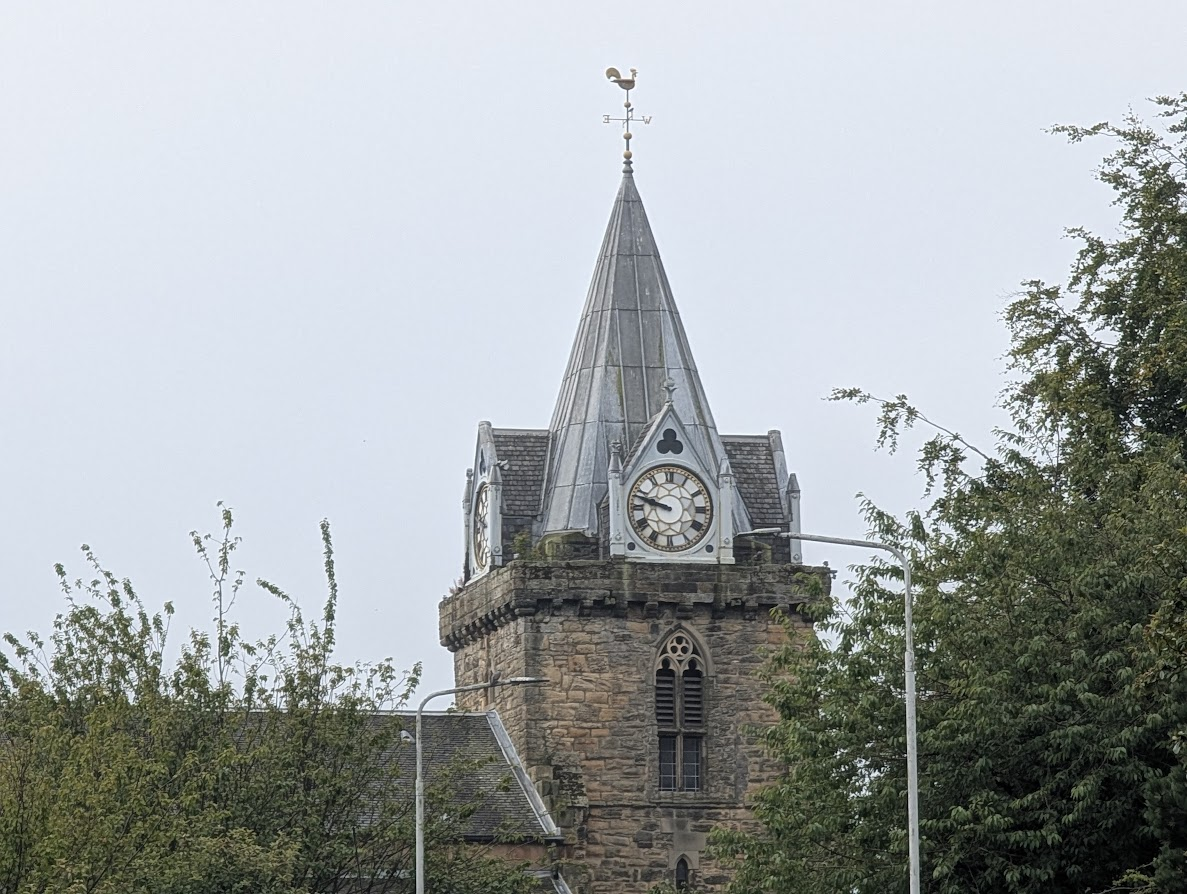
As was so often the case, the church is built on the highest point in town so that it can be seen from all around.
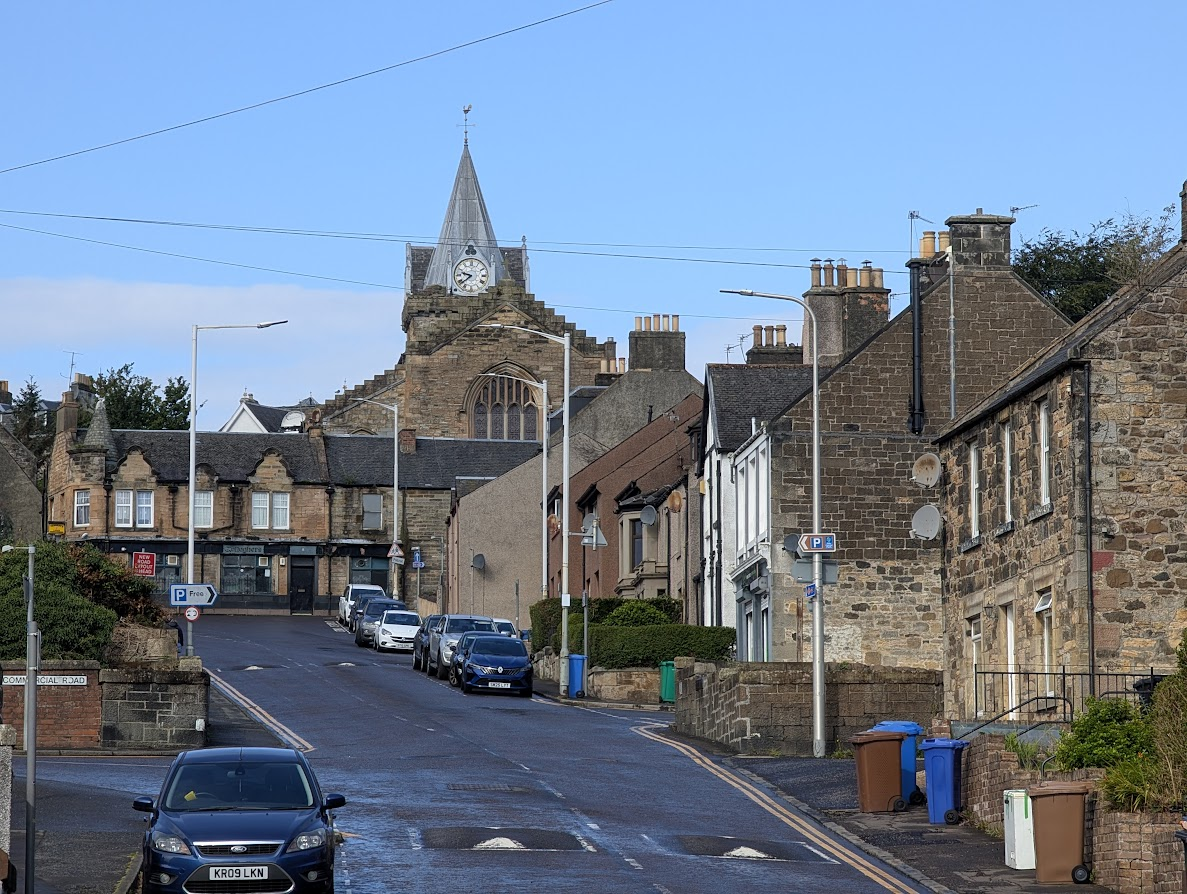
In fact there are so many views and a wonderful churchyard that the church deserves its own post!
Before we move on, I leave you with this beautiful shot of the church and War memorial in the Scottish sunshine.
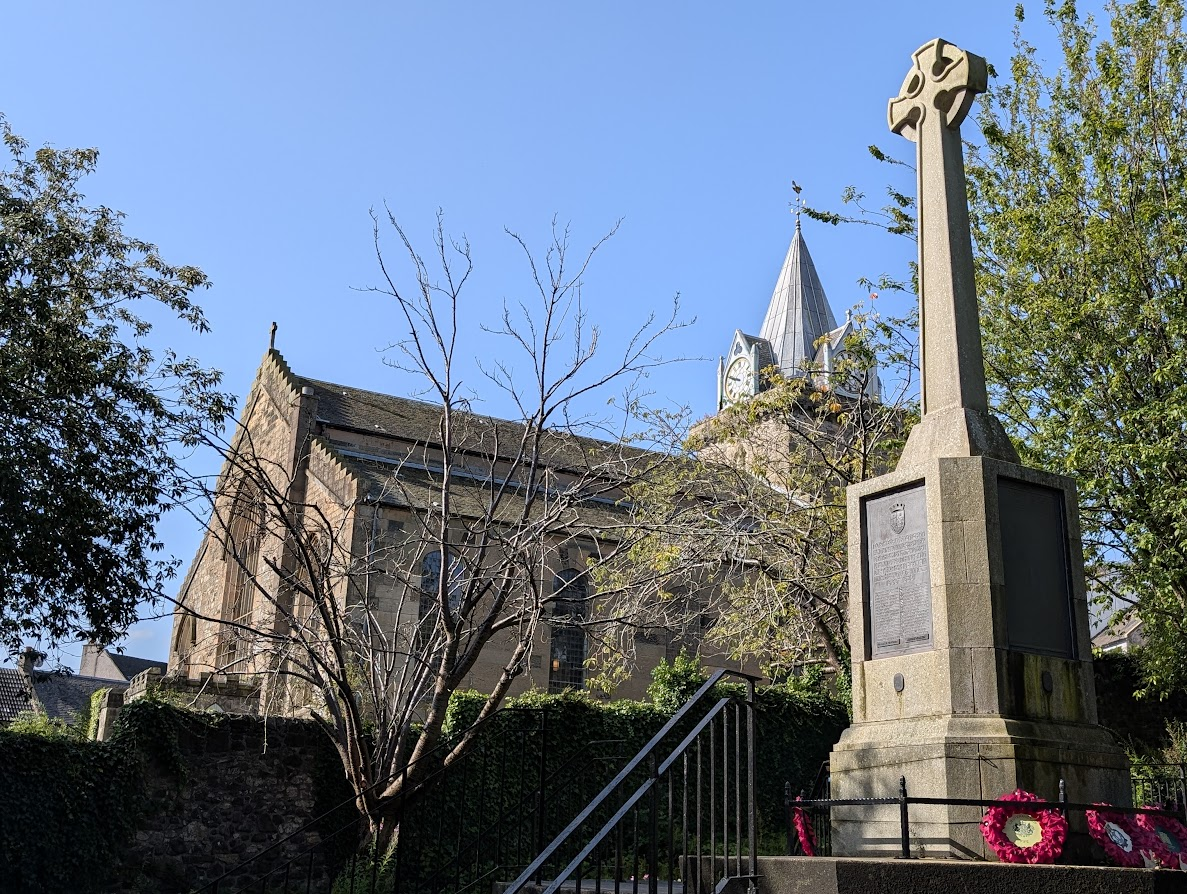

### Inverkeithing Town House
Inverkeithing Town House is a Category A listed building that dates primarily from the 18th century, but it sits on the site of an even older tolbooth (a combination of a town hall, courthouse, and jail) that existed as far back as the mid-16th century.
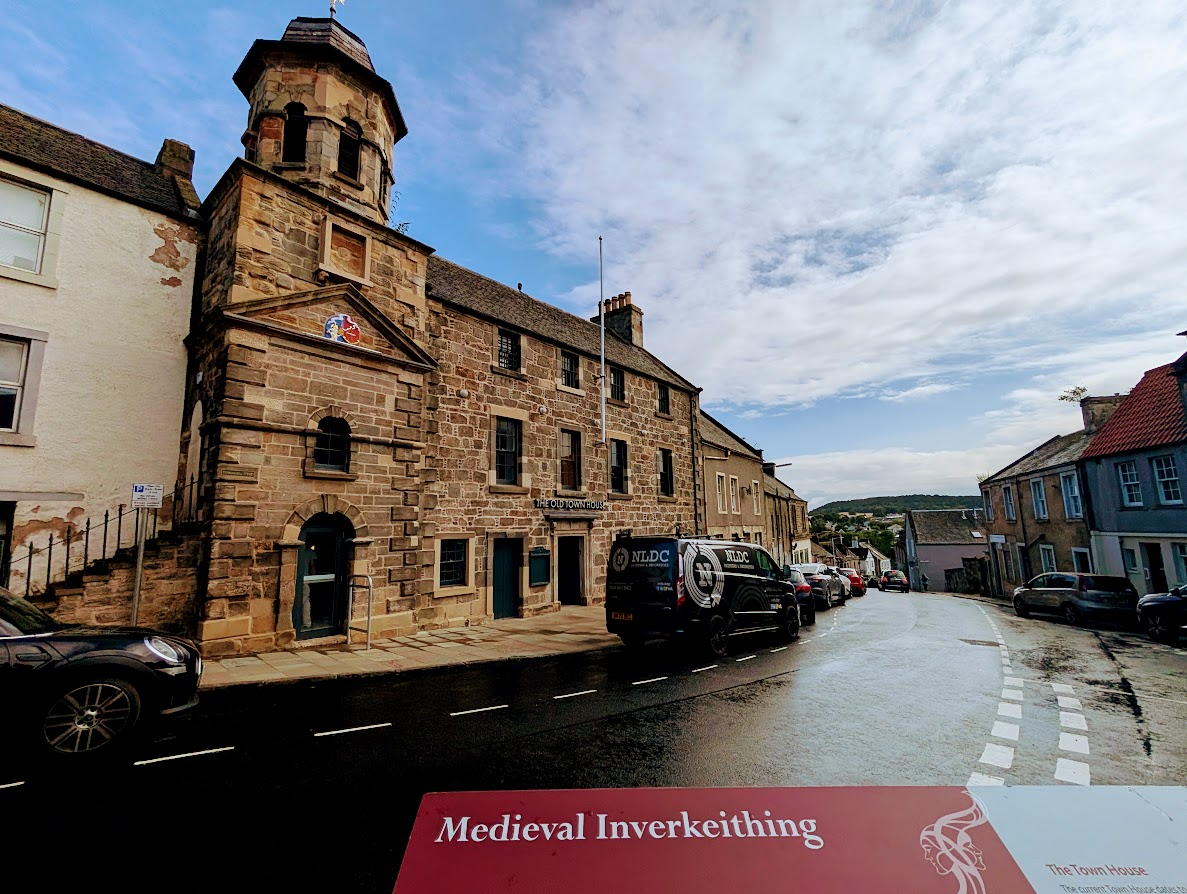
The tower was designed by John Monroe in the Renaissance style and completed in 1755. The main section which is in the neoclassical style was designed by George Monroe and completed in 1770.
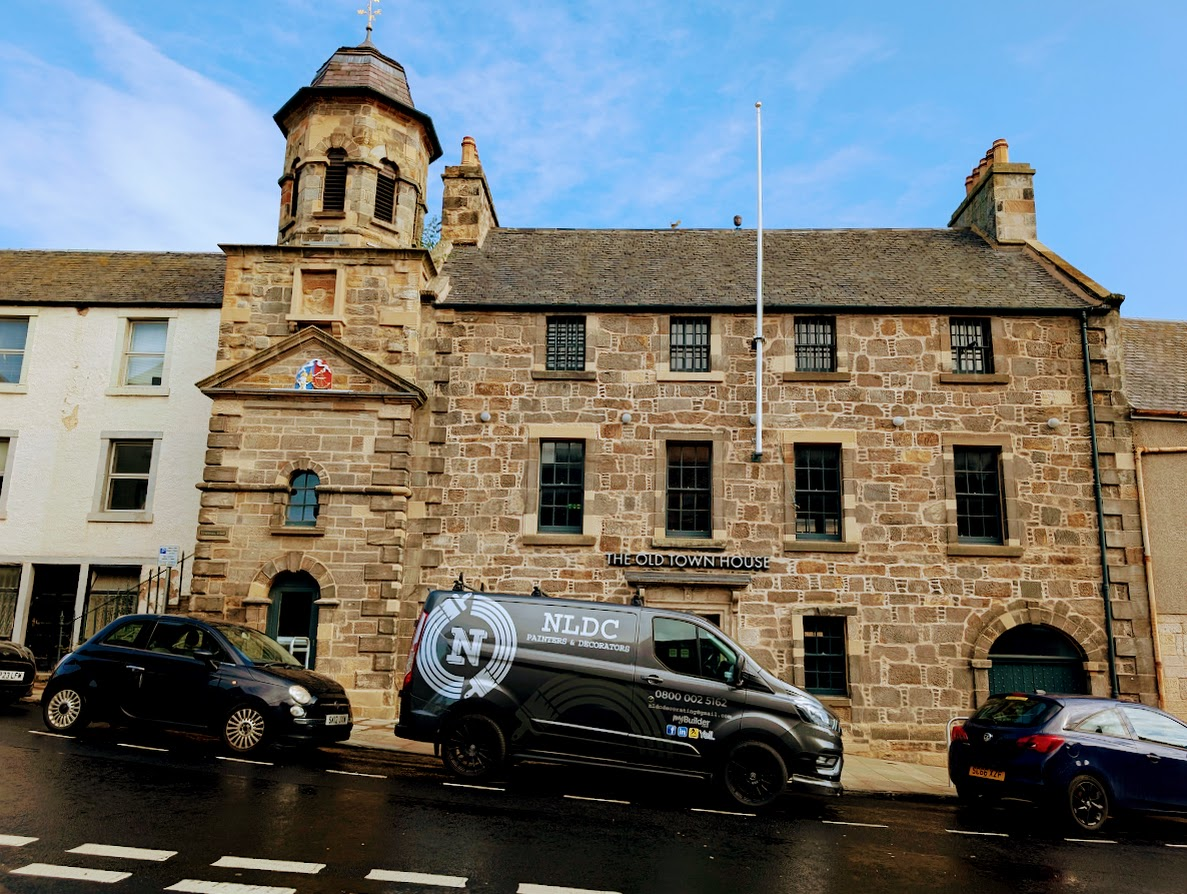
### Coat of Arms
The patron Saint of Inverkeithing is St Peter and you can see him holding up his church! Fluffing strong fellow he was!
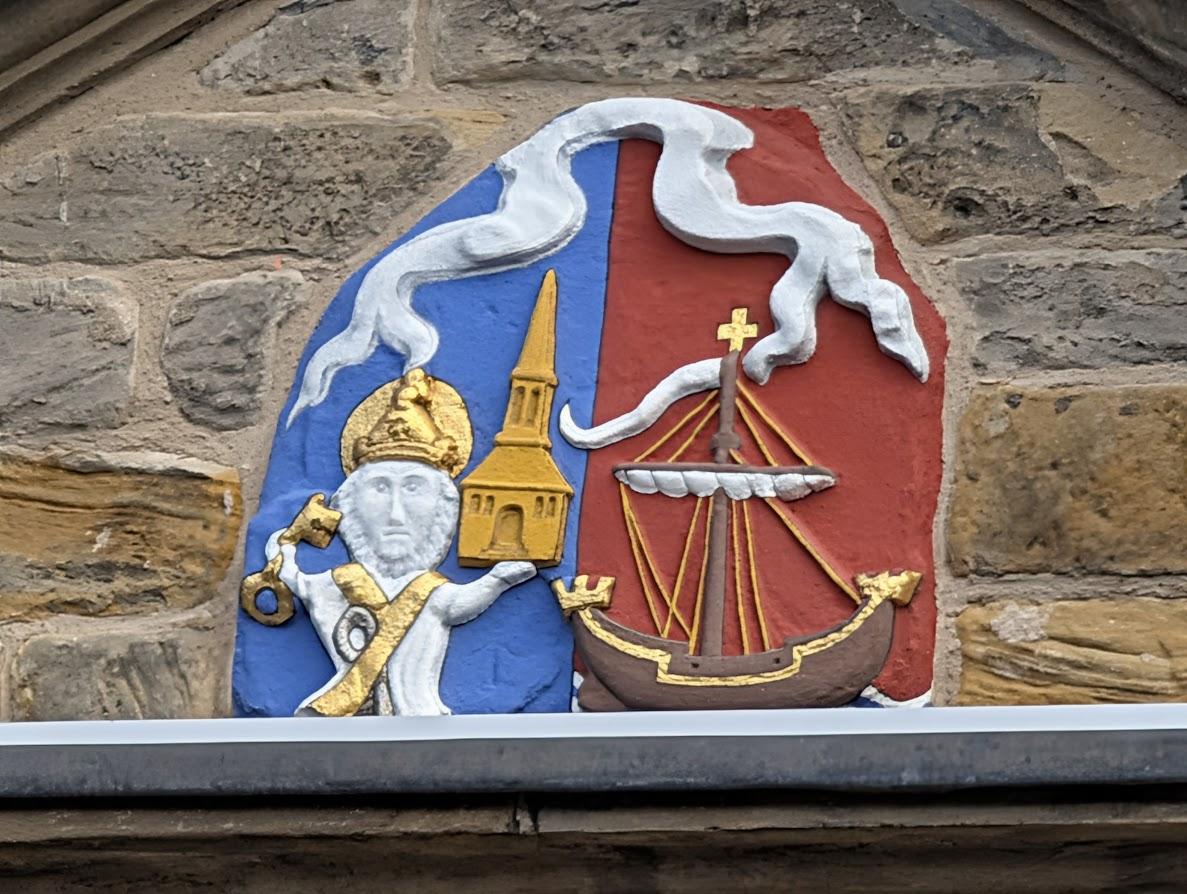

### Fordell's Lodging
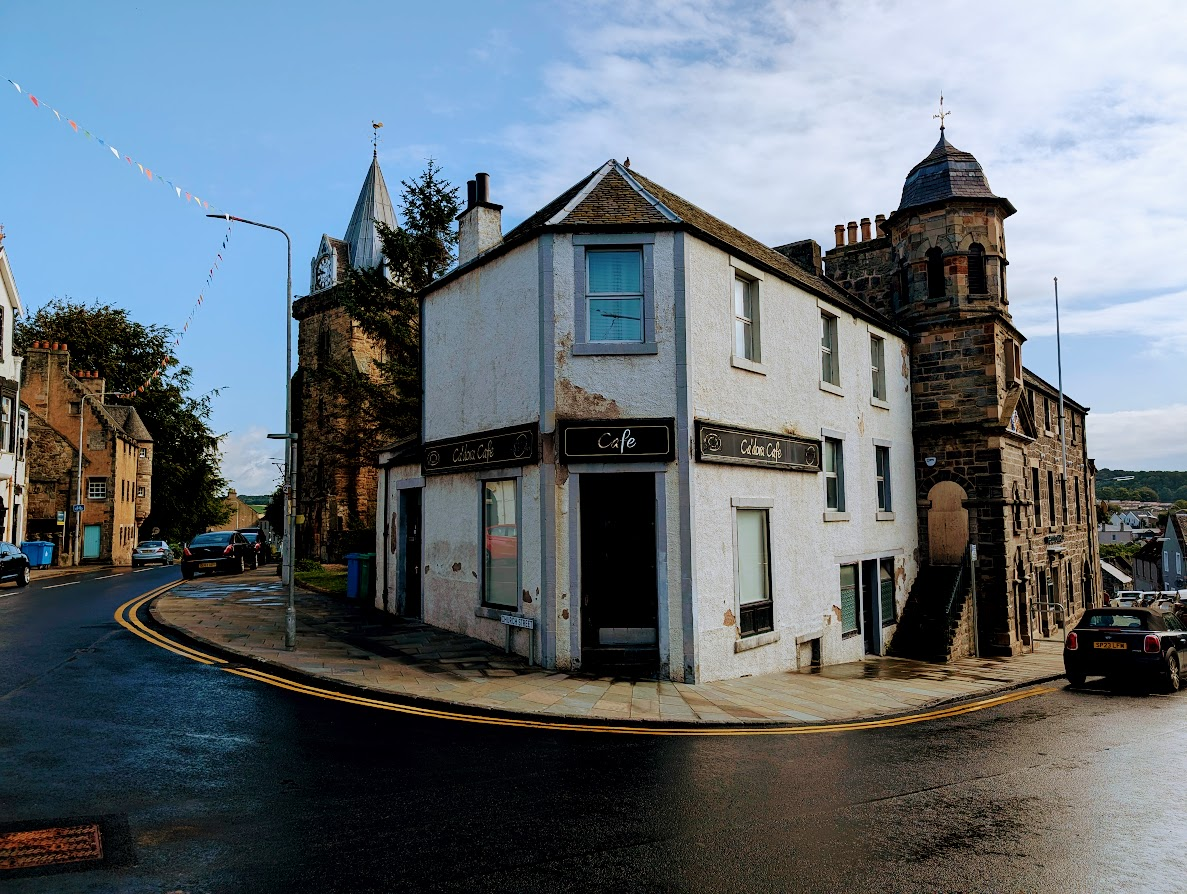
We can see the town centre to the right and the church in the middle but to the left are the lodgings... Do you see them? Let's get closer...
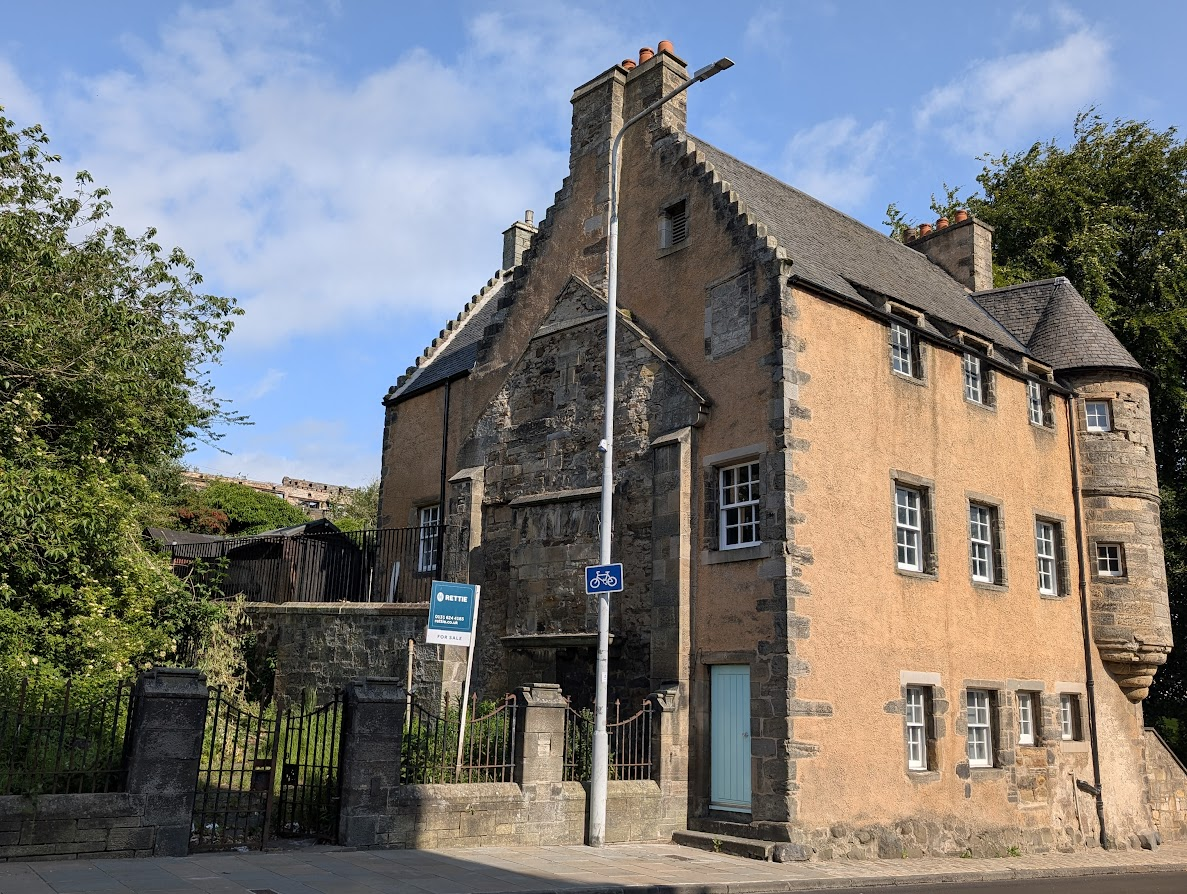
I do like the turret!
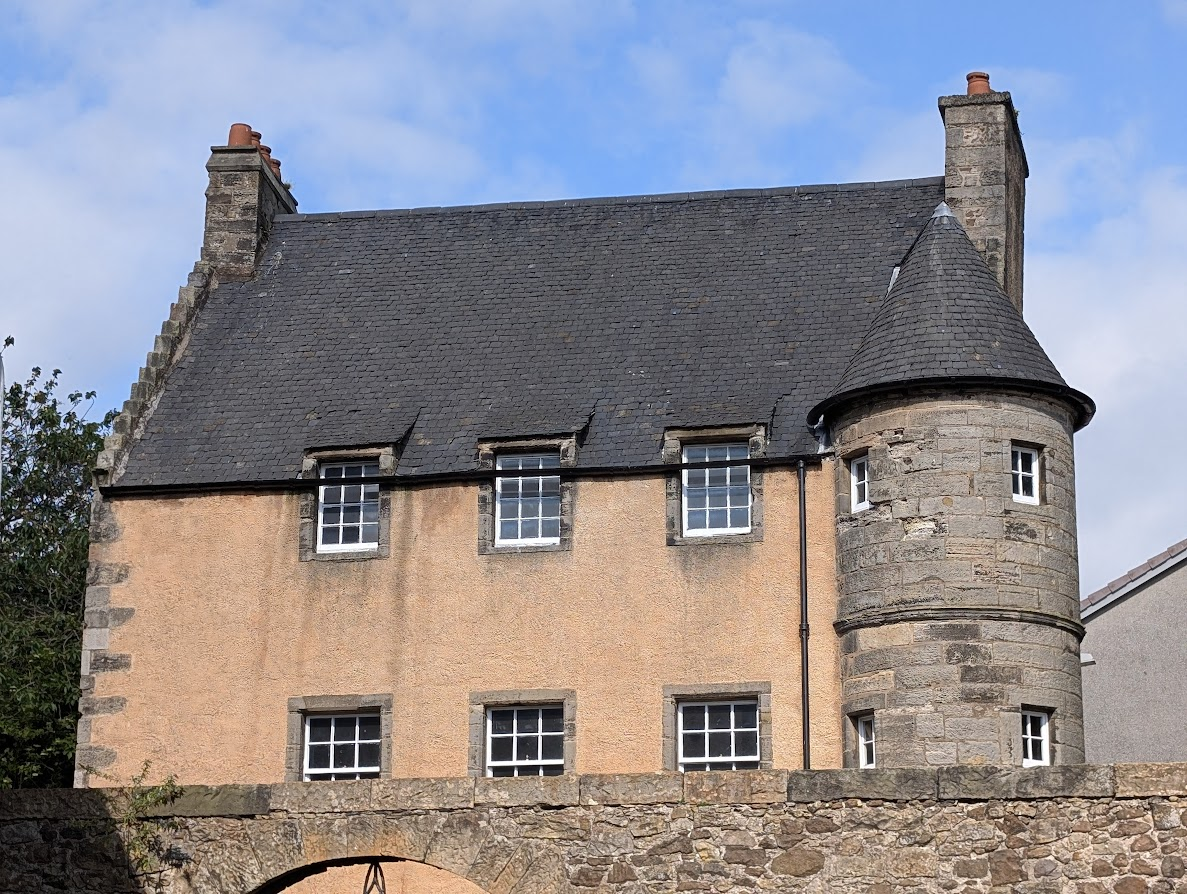
It is no wonder there is a turret shape in there, as It was originally built as a secondary townhouse for Sir John Henderson of Fordell, whose main residence was the nearby Fordell Castle.

### Hospitium of the Grey Friars
This is the best-preserved part of a 14th-century Franciscan friary.
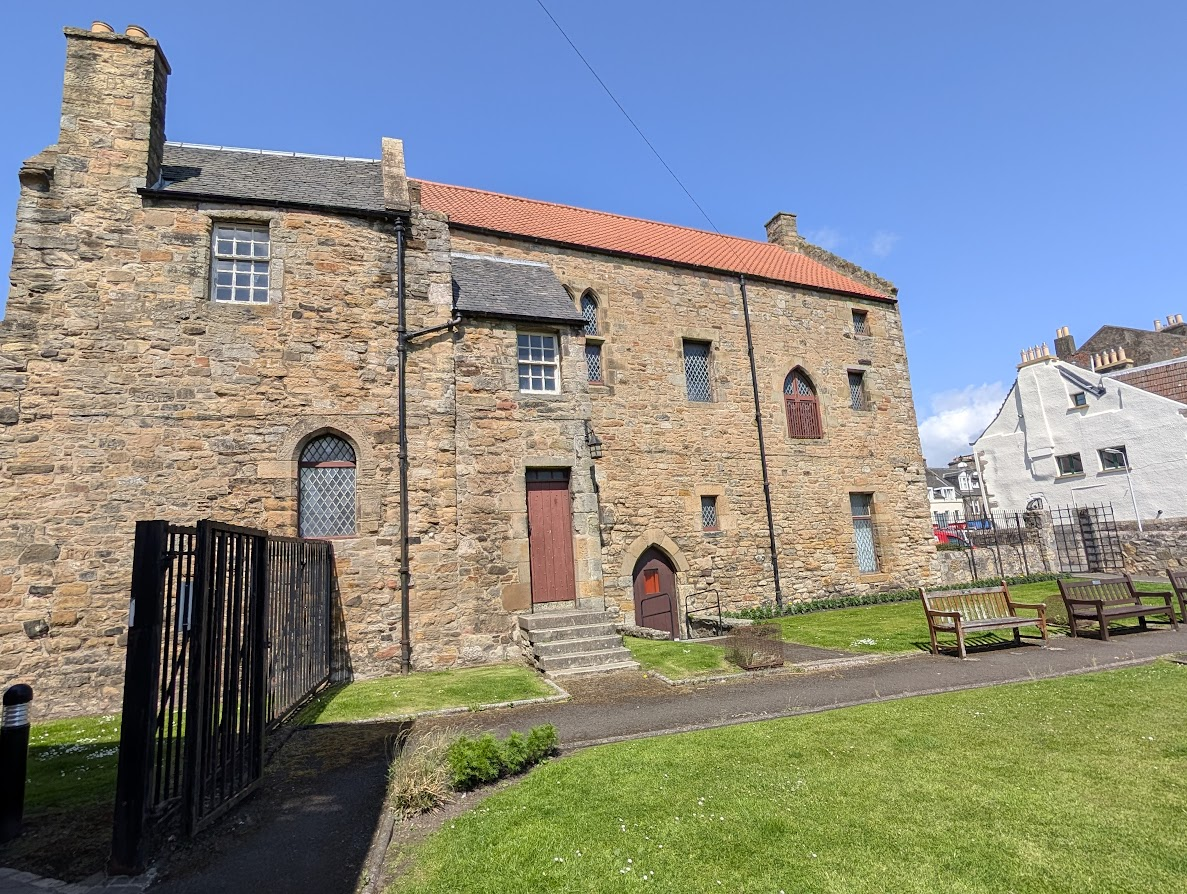
Originally, it served as a guesthouse for pilgrims and travelers on their way to places like St Andrews.
The building with its distinctive crow-stepped gables has been repurposed over the centuries but its medieval origins are still evident.

What a view you get from the Friary gardens!
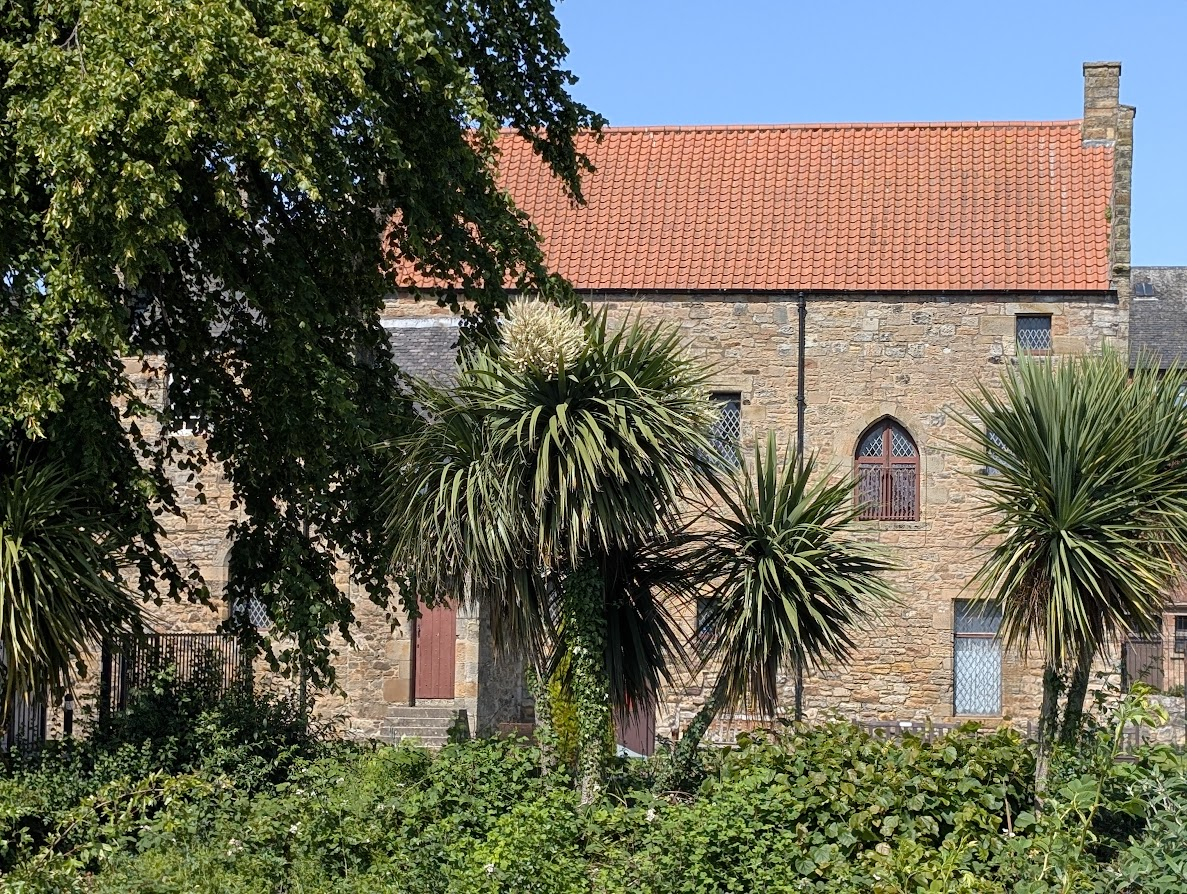
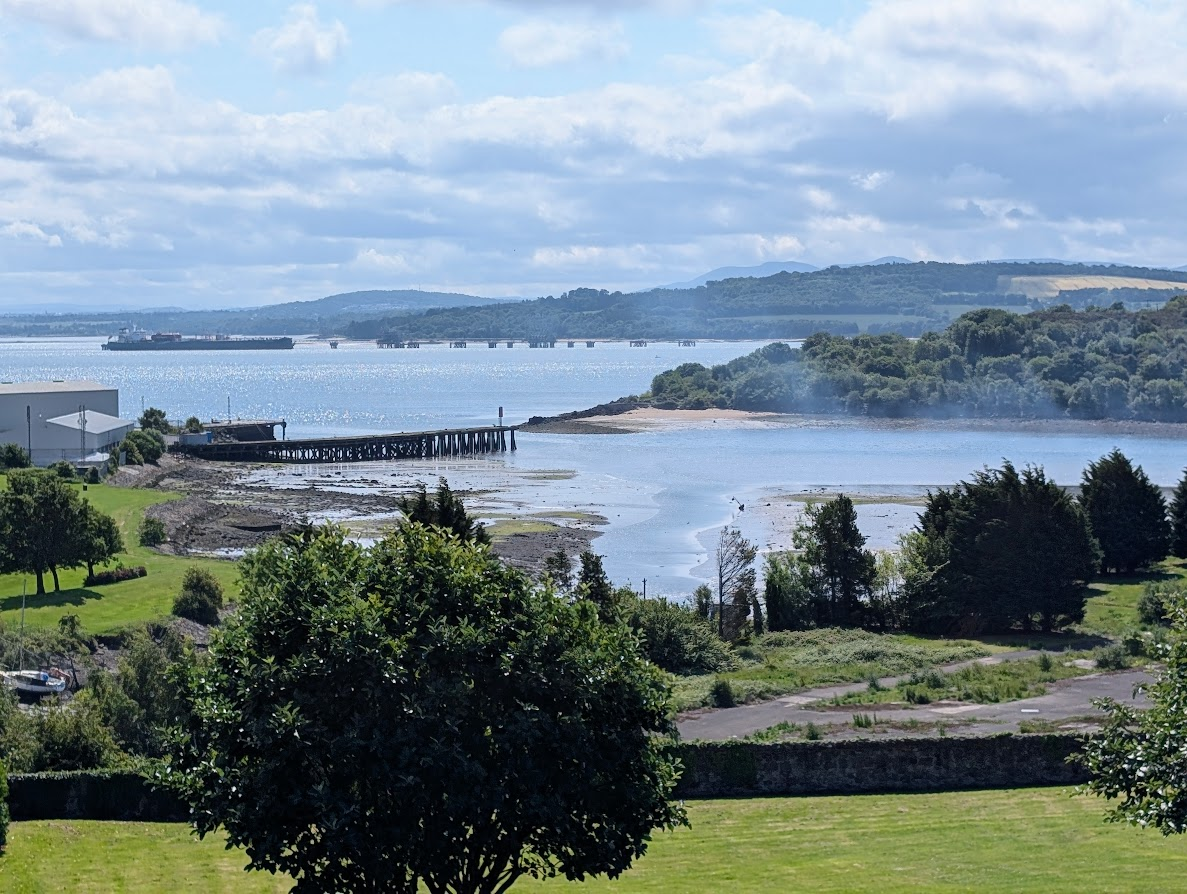

### The Inverkeithing Civic Centre
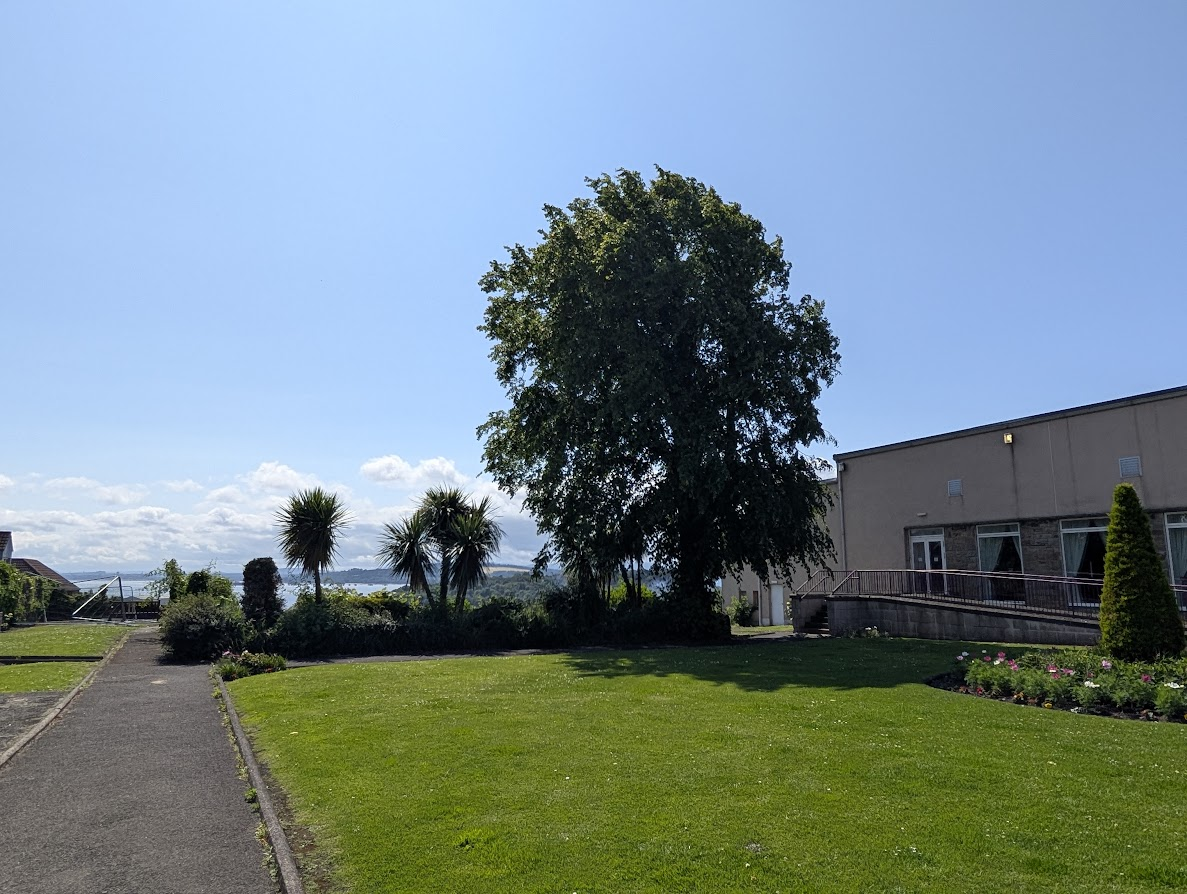
To the right of the old friary is the new Civic centre, which is both a library and a bit of a community hub. I know when I lived in Inverkeithing about 9 years ago, I was often in the centre.
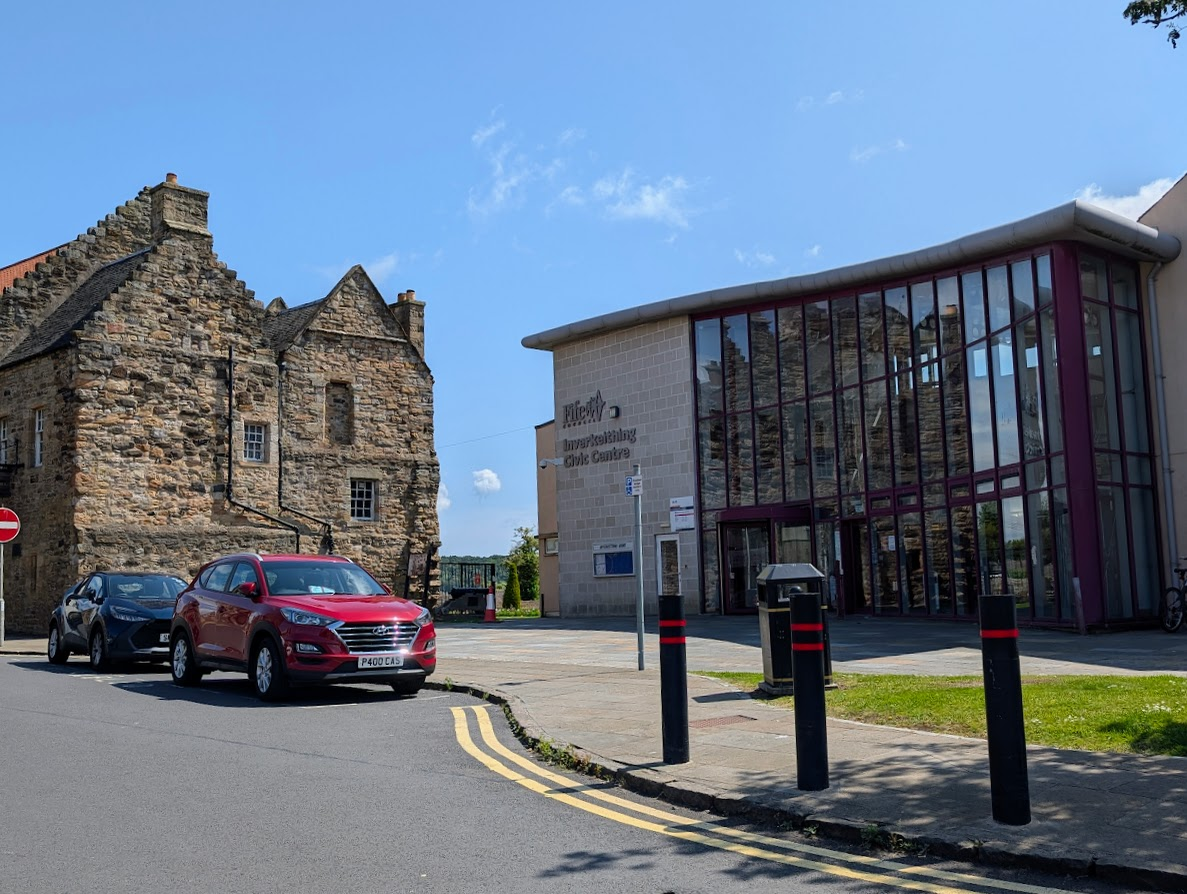
One of my favourite parts is something that stands outside the centre, although I am sure it has been moved since I lived there!
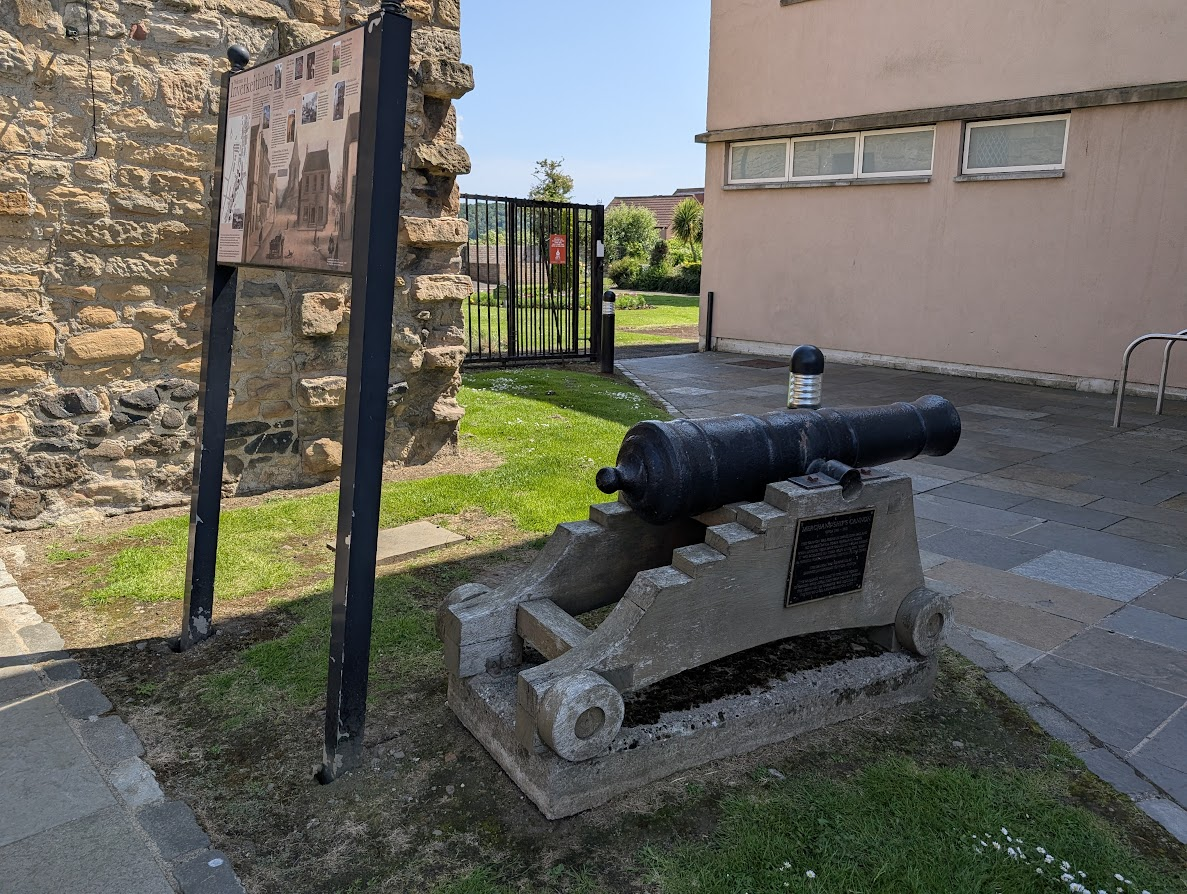
### The Merchant Ship's cannon!
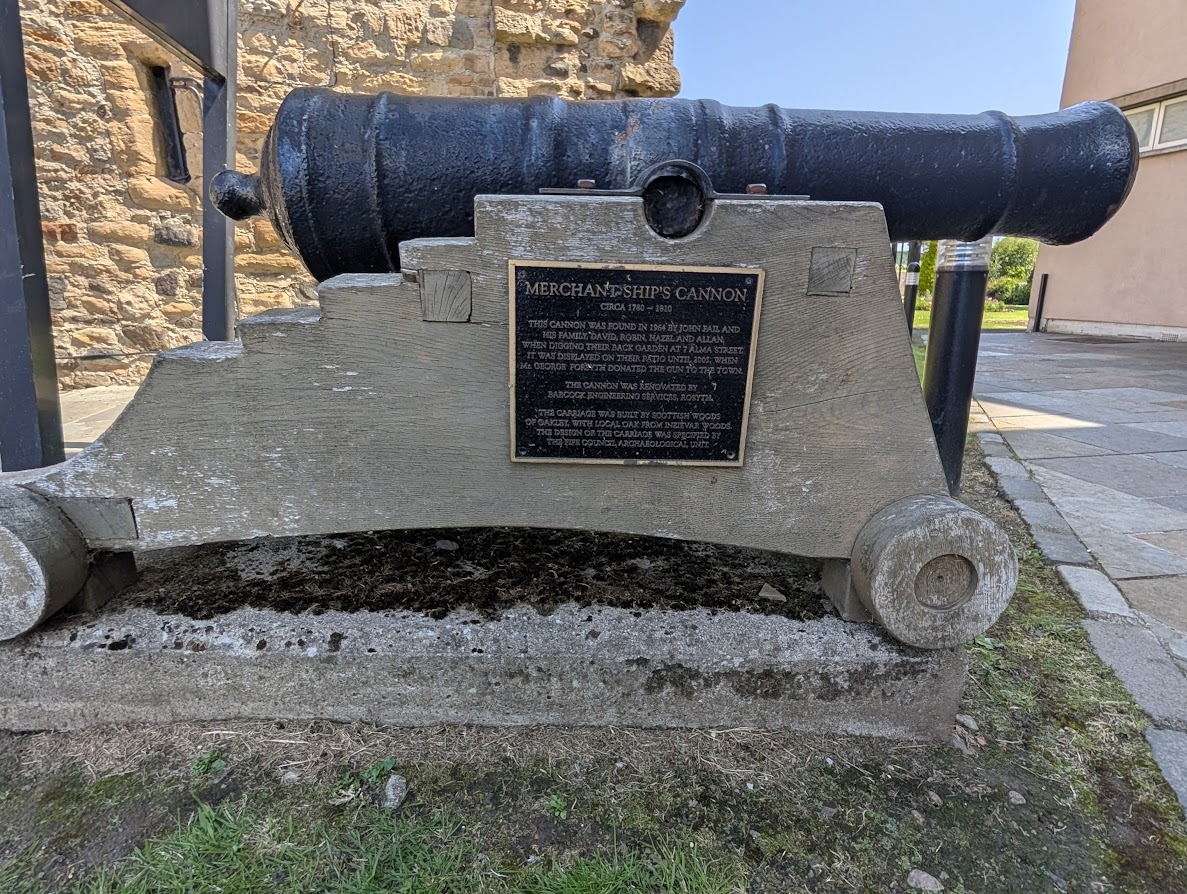
The cannon was found in 1964 by John Fail and his family while they were digging in their back garden on Alma Street. It had likely been buried there for a very long time, and its origin is believed to be from a merchant vessel.
I mean how fluffing cool is that!
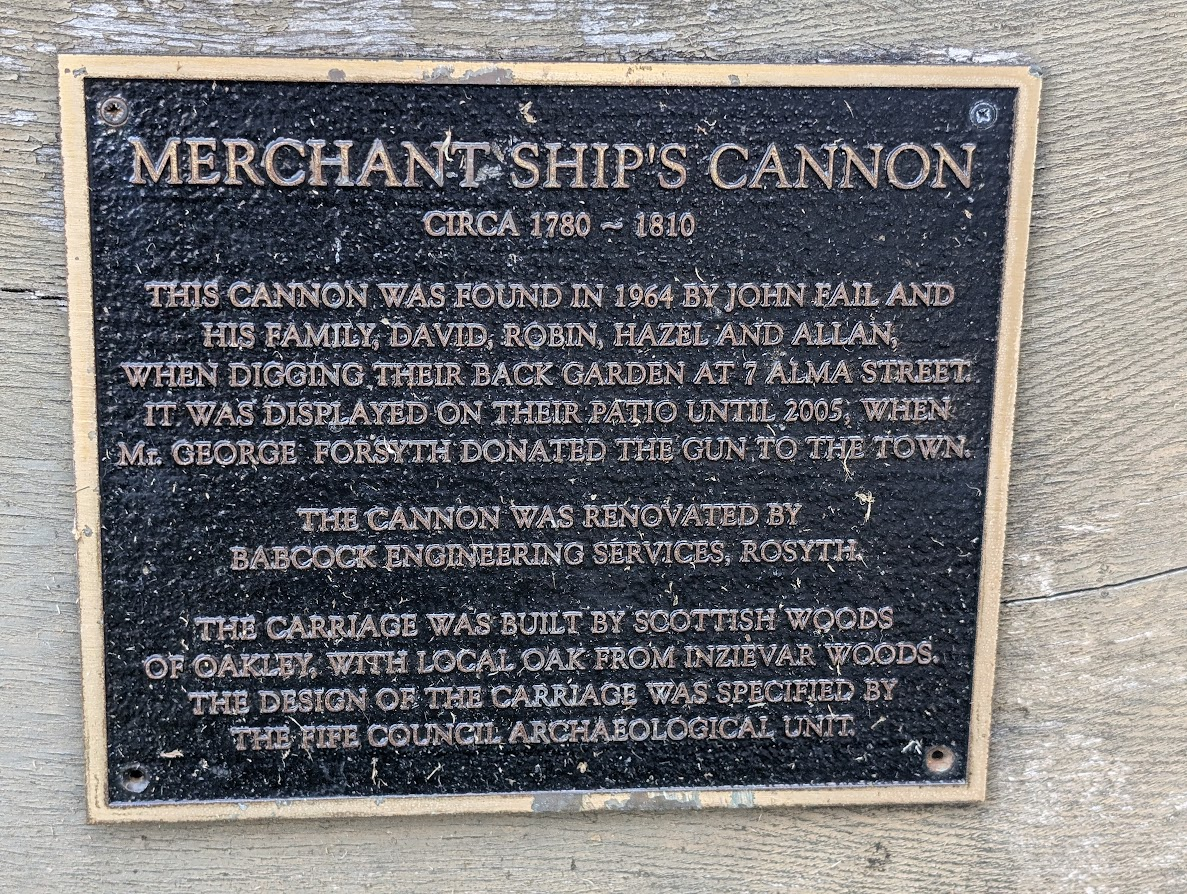

### Thanks so much for popping in and hope you enjoyed our wee daunder through the Royal Burgh of Inverkeithing...
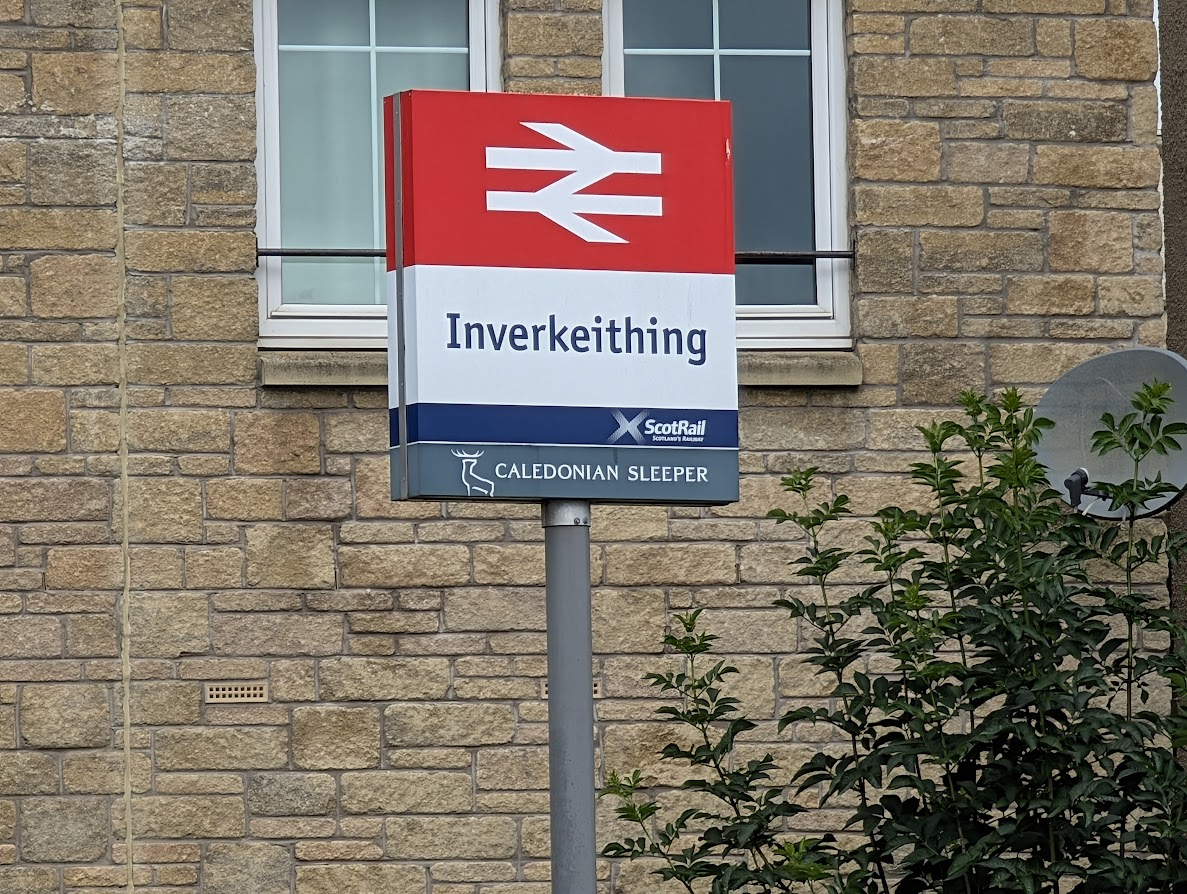
### But wait ... what about the Divit?!?
Inverkeithing is affectionately known to locals as the Divit, infact jump in a taxi and say you are going to Inverkeithing they will probably say the Divit to you.
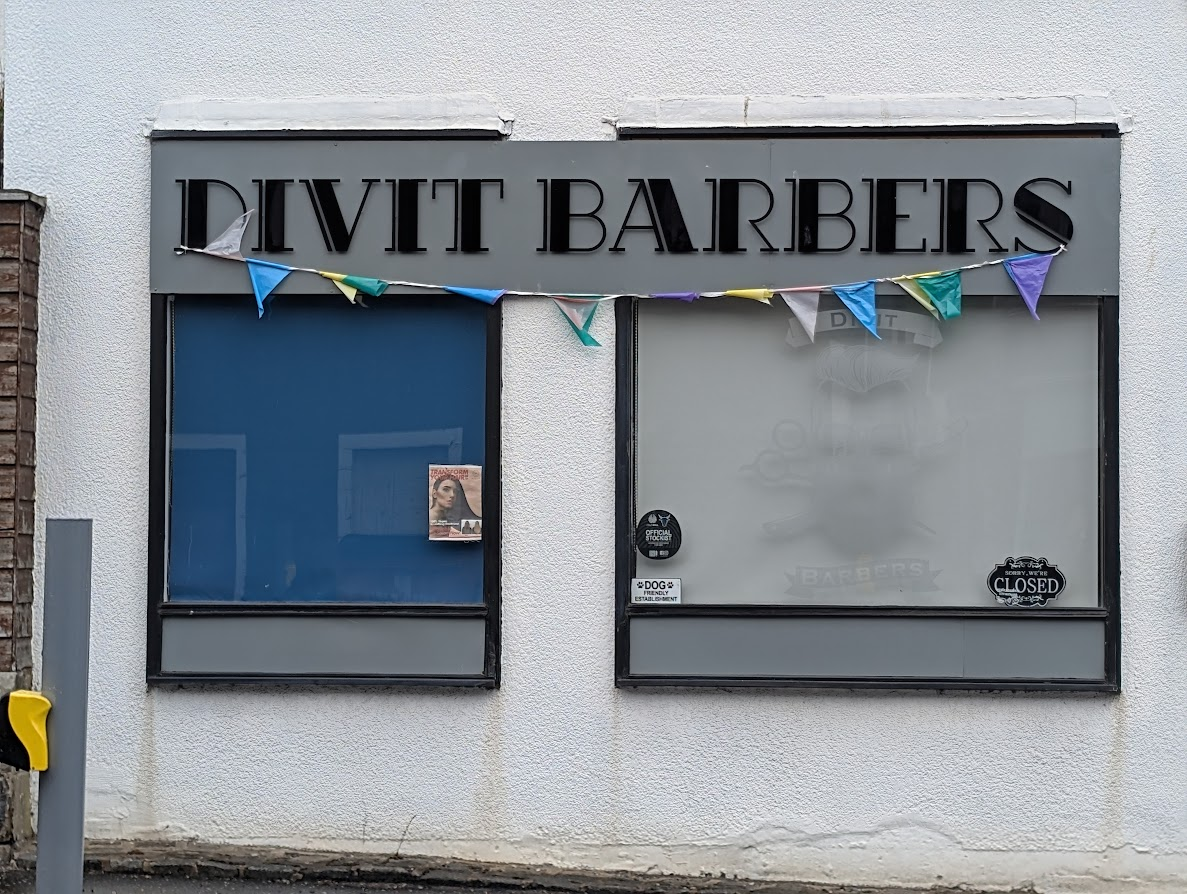
There are more than one shop calling themselves Divit something..
***But why the Divit?***
The answer nobody really knows, but the story I know and like to say is ... (courtesy of gemini)
>The Andrew Carnegie Story: This is a popular local legend. The story goes that when Andrew Carnegie was traveling through the area to recruit men to work in his plants in America, the men of Inverkeithing were not interested. They allegedly showed their displeasure by throwing "divots" of grass at him as he passed through the town. As a result, Carnegie supposedly swore that Inverkeithing would never receive a penny of his charitable legacy. This is a great story, but it's often viewed as more of a folk tale than a historical fact.


**Hey fellow creators & readers! 📝🎶🎨**
This article was brought to you via **[peakd](https://peakd.com/register?ref=tengolotodo)**, a cool way to blog on the **Hive** social platform.
Are you a writer, artist, vlogger, musician, poet, or any kind of content wizard? **Hive** is a bit different – it’s run by its community, not a big company. That means your voice, your content! It can't just be silenced, censored, or demonetized out of the blue. And that truly matters these days!
If you're ready for a social experience where you genuinely own and control your creations, why not check out [Hive](https://peakd.com/register?ref=tengolotodo)?
➡️ Learn more about Hive [here](https://hive.io/about)
➡️ Ready to join? Create your Hive account [here](https://peakd.com/register?ref=tengolotodo)
Come build the future of content with us!
[](https://peakd.com/register?ref=tengolotodo)